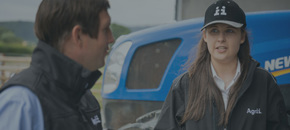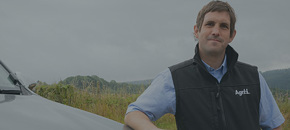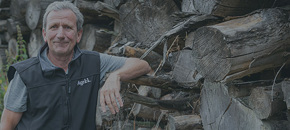Perfecting and Protecting Ornamental Crops
Live from Readyhedge Farm
In this episode of Tramlines, we're delving into the world of ornamental crops. We explore the production techniques and challenges faced by Readyhedge, a business at the forefront of growing high-quality ornamental plants
We are joined today by horticultural agronomists Jason Steels, Jonathan Garratt, and Matt Greep, as well as growers Simon and Toby Williamson from Readyhedge in South Worcestershire.
This Episode Features:

Matt Greep
Agronomist

Jason Steels
Agronomist

Jonathan Garratt

Simon and Toby Williamson
Readyhedge in South Worcestershire.
Introduction to Readyhedge:
26 Years of Excellence in Ornamental Plant Growing
Simon, how long have you been growing ornamental plants here at Readyhedge?
Simon Williamson:
We've been growing for about 26 years on this site. We changed our name to Readyhedge, which was a suggestion from a friend. Currently, we grow around 40 to 48 kilometres (that’s 48,000 metres) of plants in one-metre troughs, or what we call "ready bags." Sizes range from 30cm up to around 1.6 to 1.8 metres.
And where are your customers based?
All across the UK. We supply mainly to wholesale nurseries, commercial landscapers, and a small amount to the public, though most of our business is commercial. We also have franchises in Holland and Southern Ireland that contract-grow for us.
Managing Ornamental Crops: Year-Round Perfection
What are the key production challenges?
Toby Williamson:
Our plants are essentially a luxury product, so they must look immaculate all year round. Weather delays can stop us from moving products, and we’re growing crops two years in advance. Predicting market demand is tough – things like the box moth caterpillar can suddenly wipe out sales of certain varieties.
How do you manage market changes and such unpredictable factors?
Toby Williamson:
It’s difficult. We try to anticipate regular demand, but with diseases or pests like the box moth caterpillar, we can't foresee the full impact until it happens. There’s no exact formula—it’s largely trial and error.
Disease and Pest Management: A Zero Tolerance Approach
As horticulturalists, what challenges do you face in keeping these crops healthy?
Matt Greep:
As Toby said, it’s an ornamental crop, so everything must look pristine—from the roots to the leaves. We have zero tolerance for any pest damage, and we react swiftly to any issues. We also implement a prophylactic programme, anticipating potential pest or disease problems early in the season to prevent issues from worsening.
Integrated Pest Management (IPM) in Practice
How important is IPM (Integrated Pest Management) in ornamental plant production?
Jason Steels:
IPM is critical, especially now that it’s required by UK law under the Sustainable Use Directive. Growers must demonstrate active use of IPM principles. It starts with cultural controls—keeping things clean and tidy—before moving up to physical methods, biopesticides, and, as a last resort, chemical controls.
Can you share some specific IPM strategies used here?
Jonathan Garratt:
Certainly. For example, for aphids, parasitoid wasps and natural predators like lacewings or ladybirds can be used. Another key issue is vine weevil control, where the industry has shifted to using nematodes, as we've lost access to certain chemical treatments.
Reducing Peat in Growing Media: A Major Challenge
You're reducing the peat content of the growing medium - how does that affect production?
Toby Williamson:
We currently use a 40% reduced-peat compost with slow-release and early-start fertilisers. Reducing peat is challenging, as nothing grows as well as in pure peat. We’re running tests on peat-free alternatives, but it’s tough to find a comparable product.
How big of a challenge is this for growers?
Jason Steels:
It’s a significant challenge. Growers have relied on peat for centuries, and switching to alternative substrates requires new irrigation practices, as these media tend to need more water. This change also alters the nutrition requirements of the crops.
How has the shift affected your business?
Simon Williamson:
It’s not just us—it’s the entire horticultural industry. The biggest challenge is water. These newer mixes are more open, meaning they don’t hold nutrients or water as well as peat-based substrates, leading to increased water use and nutrient loss.
Rooting Systems and Pest Control: A Delicate Balance
Can you describe the rooting systems in your plants?
Toby Williamson:
We grow our plants in metre-long troughs, which are fully rooted and ready for immediate planting. The second option is a "ready bag," which is bigger and allows the plants to become denser and more mature.
What do you think about the health of the root systems?
Jonathan Garratt:
They look great—dense and nicely bound together. The roots are white, which is a sign of a healthy crop.
The Impact of Pests: Box Moth Caterpillar and Vine Weevil
You’ve mentioned the box moth caterpillar. How has it affected your operations?
Toby Williamson:
It’s been a major issue. We used to grow 6,000 metres of box, but now, due to the pest, we’re down to just 1,500 metres, and that number may drop even further. We didn’t foresee the market drop-off caused by the box moth.
What other pests are you concerned about?
Matt Greep:
Vine weevil is another major pest, especially in ornamental crops. The larvae damage the roots, which can kill the plant. We’ve lost access to key chemical treatments, so we now rely heavily on nematodes for control.
Looking to the Future: Biopesticides and Sustainability
What’s on the horizon in terms of pest control and sustainability?
Jonathan Garratt:
We’re always looking for ways to stay ahead. Biopesticides are a big focus, especially with the loss of traditional chemical options. The industry is moving towards more natural solutions to fill the gaps in our pest control programmes.
Jason Steels:
At Agrii, we’re investing heavily in biopesticides. By 2030, we expect to see more biopesticides on the market than synthetics. We’re working hard to help growers transition to these new solutions.
Top Tips from the Experts
As we wrap up, we like to share a top tip from each of our guests:
Matt Greep:
It’s all about the roots, shoots, and leaves. Look after all three, and you’ll have healthy plants.
Jason Steels:
A healthy plant is a happy plant—don’t neglect them, pay attention to their needs.
Jonathan Garratt:
Readyhedge is a great example of how expert knowledge, careful management, and regular monitoring can keep crops thriving.
To find out more about how the Agrii horticulture team of advisors can help your growing business, visit agrii.co.uk/your-crops/fruit
Related episodes
Live on Farm: Walking Fields of Gold in Cornwall
Episode 23Never miss an episode of Tramlines








